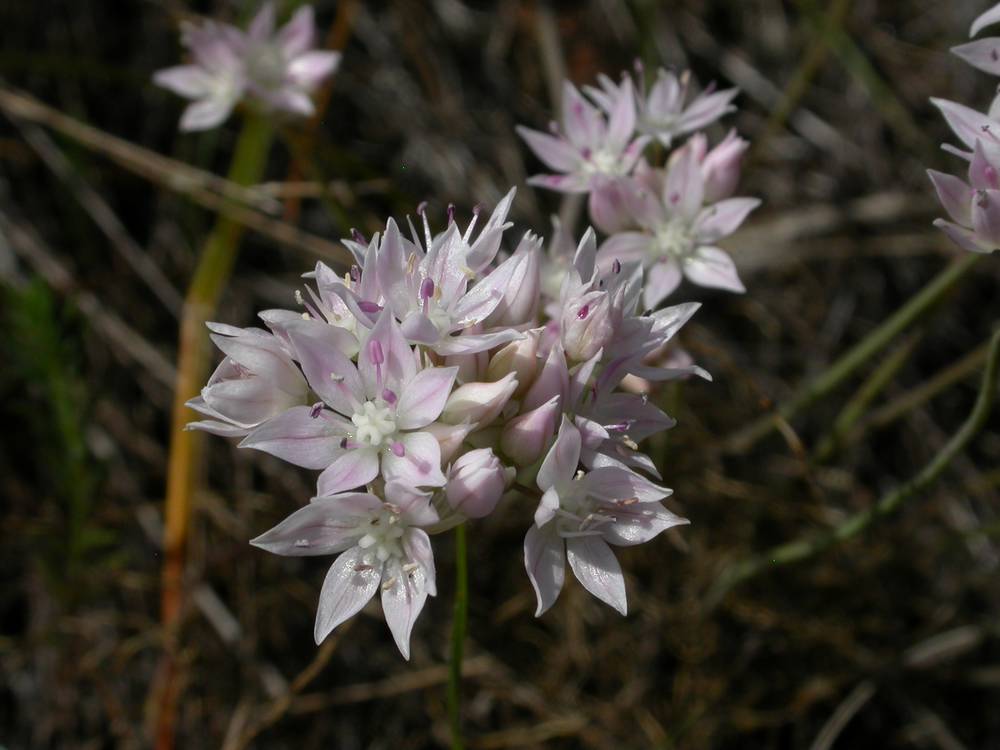Allium amplectens
slim-leaf onion
1–15+; increase bulbs absent or more or less equaling parent bulbs, never appearing as a basal cluster; ovoid to more or less globose;
outer coats enclosing 1 or more bulbs, prominently cellular-reticulate, membranous;
cells in more or less vertical rows, forming irregular herringbone pattern, transversely elongate; without fibers.
persistent, withering from tip at anthesis, 2–4;
blades solid, subterete or more or less channeled, 10–36 cm × 0.5–2 mm.
persistent; solitary; erect; solid; terete, 15–50 cm × 3–5 mm.
shattering after seeds mature; each flower deciduous with its pedicel as a unit; erect; compact, 10–50-flowered, hemispheric;
pedicels 4–16 mm;
spathe bracts 2–3.
5–9 mm;
tepals spreading, lanceolate; more or less equal, white to pink;
margins entire;
apex acute;
stamens included;
ovary crested with 6 prominent processes;
stigma scarcely thickened, unlobed.
=14, 21, 28.
Allium amplectens
Moist seeps, clay soils including dry meadows, savanna, and serpentine barrens. Flowering May–Jul. 0–2500 m. BR, Casc, CR, ECas, Est, Sisk, WV. WA, CA; north to British Columbia. Native.
Nick Otting, Richard Brainerd, Barbara Wilson
- Local floras:
BC,
CA,
OR,
WA
- Local Web sites:
CalFlora,
CalPhotos,
Flora NW,
PNW Herbaria,
Turner Photog.
WildflowerSearch
iNaturalist (observations)
USDA Plants Database
- LBJ Wildflower Center
- SEINet
- Plants of the World Online
- Encyclopedia of Life
- Wikipedia
- Google Image Search



